#TROPICS Satellites
Text

TROPICS Satellites
Researcher Will McCarty of the TROPICS program in NASA's Earth Sciences Division said the missions are part of an innovation leap aimed at increasing the number of climate-focused satellites in space. To function properly, the four satellites must be launched in a period of up to 60 days, so the other two cubesats will be sent in two weeks.
Originally, TROPICs missions were to be carried out through the European Space Agency's (ESA) unmanned Mars Express program, but were transferred to the Rocket Labs rocket in New Zealand.
#TROPICS Satellites#Researcher Will McCarty of the TROPICS program in NASA's Earth Sciences Division said the missions are part of an innovation leap aimed at#the four satellites must be launched in a period of up to 60 days#so the other two cubesats will be sent in two weeks.#Originally#TROPICs missions were to be carried out through the European Space Agency's (ESA) unmanned Mars Express program#but were transferred to the Rocket Labs rocket in New Zealand.
5 notes
·
View notes
Text



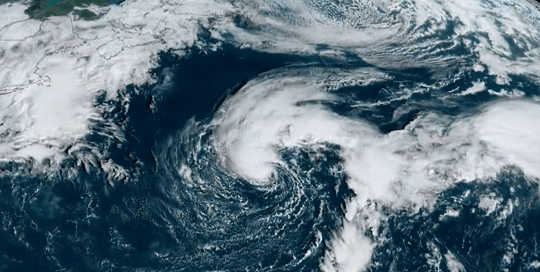
Hurricane —Lisa and Martin l CIRA
#satellite#atmosphere#weather#hurricane#tropical storm#earth#hurricane Lisa#clouds#floods#rain#rainstorm#nature#natural disaster#caribbean sea#ocean#north atlantic#sea#planets
4K notes
·
View notes
Text
Typhoon Mawar satellite animation
From tropical storm to category-5 equivalent intensity: 6 days of Typhoon Mawar via Himawari-9 infrared (IR) imagery.
According to the Joint Typhoon Warning Center (JTWC), Mawar's estimated peak wind speed of 160 kt (185 mph) has been achieved by only 13 other typhoons since 1979.
As noted by Dr. Jeff Masters on Twitter, 185 mph ties Mawar with Phyllis (1958) as the strongest observed May typhoon, and only Surigae (2021) achieved a higher intensity earlier in the year (it occurred in April).
vimeo
#typhoon mawar#tropical cyclone#infrared satellite imagery#satellite animation#storm-following satellite animation#Vimeo
2 notes
·
View notes
Text
"Francine [was] the sixth named storm of the Atlantic hurricane season, the first hurricane to make landfall in Louisiana since 2021, and the third to make landfall in the U.S. this year." @NOAASatellites
#NOAA Satellites#Hurricane Francine#2024 Hurricane Season#Tropical Weather#Atlantic Hurricane Season#NOAA.gov#NOAA NESDIS
0 notes
Text

Hurricane Ernesto
August 16, 2024
0 notes
Text



Hurricane Ophelia on Collision Course with Ireland
Hurricane Ophelia over the central Atlantic — CIMSS Satellite Blog, CIMSS
Sunday, October 15, 2017
#Hurricane Ophelia#Ireland#NASA GPM#CIMSS Satellite Blog#CIMSS#NORA#Sunday#October 15 2017#October 15#2017#2010s#Tropical Storm#Hurricane
1 note
·
View note
Text
Word List: Moon

beautiful words with "moon" to try to include in your poem/story
Honeymoon - a period of unusual harmony especially following the establishment of a new relationship
Moonbeam - a ray of light from the moon
Moonbow - a rainbow formed by light from the moon
Mooncalf - a foolish or absent-minded person; simpleton
Moondust - fine dry particles of the moon's soil
Mooneye - a silvery North American freshwater bony fish (Hiodon tergisus)
Moonfaced - having a round face
Moonfish - any of various compressed often short deep-bodied silvery or yellowish marine fishes
Moonflower - a tropical American morning glory (Ipomoea alba synonym Calonyction aculeatum) with fragrant flowers
Mooniness - the quality or state of being moony; dreaminess, inattention
Moonlet - a small natural or artificial satellite
Moonless - lacking the light of the moon
Moonport - a facility for launching spacecraft to the moon
Moonquake - a seismic event on the moon
Moonrise - the rising of the moon above the horizon
Moonroof - a glass sunroof
Moonsail - a light square sail set above a skysail and carried by some clipper ships in light winds
Moonscape - the surface of the moon as seen or as depicted
Moonseed - a twining plant (Menispermum canadense) of eastern North America that has crescent-shaped seeds and black fruits
Moonset - the descent of the moon below the horizon
Moonshine - moonlight; empty talk, nonsense; intoxicating liquor
Moonshot - an extremely ambitious project or mission undertaken to achieve a monumental goal
Moonstone - a transparent or translucent feldspar of pearly or opaline luster used as a gem
Moonstruck - affected by or as if by the moon, such as: romantically sentimental, lost in fantasy or reverie, or not mentally sound
Moonwalk - to dance by gliding backwards while appearing to make forward walking motions
Moonward - toward the moon
Moonwort - a fern of the genus Botrychium (especially B. lunarium); honesty
If any of these words make their way into your next poem/story, please tag me, or send me a link. I would love to read them!
More: Word Lists
#word list#moon#writing prompt#writeblr#writers on tumblr#spilled ink#dark academia#poets on tumblr#poetry#literature#nature#studyblr#langblr#linguistics#words#booklr#writing inspo#writing ideas#writing inspiration#writing tips#writing reference#thomas cole#romanticism#art#landscape#oil on canvas#writing resources
234 notes
·
View notes
Text

In this whole-Earth Overview captured yesterday, wildfire smoke can be seen across much of central South America. Many countries — including Ecuador, Peru, Bolivia and Brazil — are experiencing their worst droughts in decades, having received no significant rainfall for months. Not only have the droughts fueled several wildfires, they also have reduced water levels in many rivers of the Amazon basin to record lows, crippling hydroelectric plants and forcing some regions to schedule blackouts to conserve power.
Also visible along the day/night terminator line is Tropical Storm John approaching Mexico’s Pacific Coast. How can we see both of these events at once? In addition to standard RGB imagery captured during the day, the GOES-19 satellite that captured this image can detect faint light sources in the night sky using low-light sensors.
Source imagery: NOAA / NASA
170 notes
·
View notes
Text
Tropical storms and hurricanes have not increased in number or strength over the 50 years we've had satellites monitoring the weather. If CO2 were increasing the number of storms we'd be able to see if there is a noticeable trend.

This shows the number of tropical storms on the top line and the hurricanes on the bottom. There's no real trend on either.

This shows the accumulated cyclone energy (ACE). Global is on top and the northern hemisphere on the bottom.
ACE estimates the total energy involved in the named storm systems for each year. We can see some years were higher, some lower but again, there's no strong trend up or down.
The media and the global warming alarmists will repeat the usual nonsense about increasing numbers and intensity of storms after Beryl does its thing. They do it after every major storm and then they go quiet after every calm period.
It's one sided reporting to alarm the public and to skew perception to make you believe the world is ending, the weather is your fault, and the only cure is more government.
Source for the charts.
53 notes
·
View notes
Text
7x03 analysis part 2 — Too many Cats
Tommy flew a helicopter into a Category 5 hurricane, at least the show told us so. Is it even possible for an aircraft to fly in those conditions? Today, we are going to figure out just how strong the storm actually is canonically, and how realistic our beloved weewoo show is.
TW: Hurricane, extreme weather, natural disaster
What is the difference between a tropical storm and a hurricane? What even is a hurricane?
Both tropical storm and hurricane are tropical cyclones, just of different strength. A tropical cyclone is a rotating storm system with a low pressure center. The center, or the eye of the storm, sucks in warm moist air from an oceanic environment and it feeds into the generation of storm clouds that organize themselves into a spiral pattern due to the Earth's rotation, aka Coriolis effect.

A tropical cyclone is classified by its maximum sustained wind.

So if it's below 62 km/h, it's a tropical Depression. if it's between 63-118 km/h, it's a Tropical Storm. A Category 5 hurricane though has a maximum sustained wind speed of over 252 km/h.
A strong enough tropical cyclone is called a hurricane in North America, a typhoon in East Asian, and a cyclone in the Indian Ocean (including Australia).
How strong is the storm in 7x03 actually?
We first see the storm at the end of 7x01, when First Mate Kenneth tells Captain Ochoa there is a strengthening tropical storm in the ship's path. Captain Ochoa decides to reverse course back to LA and instructs Kenneth to alert the Coast Guard, but they get interrupted by the cartel.

Fast forward to 7x02, the next mention of the storm comes from Karen. When Hen is sent home by Chief Simpson, she tries to call Athena, but it goes straight to voicemail. Karen tells her cell service is probably spotty out at sea because of the hurricane, which has just got upgraded.
It's recently upgraded to a Category 2 hurricane, as we can see from Karen's tablet.
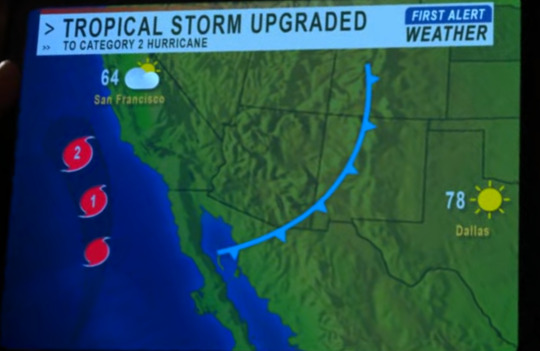
Then Hen goes to Maddie to ask the Coast Guard to look for Bathena's cruise ship. When Hen shows Maddie the ship tracking app on her phone, the time is 10:28. (I'm guessing PM because it's already dark outside during the Kyle Ortiz call.)

By the time Chief Simpson comes by to reinstate Hen, she's already talking about a Cat 5 hurricane. That can't be more than an hour or two later.

So which one is it? Is it a Cat 2 or a Cat 5? Who should I trust?
Tommy. Whenever he flies, his safety depends on his understanding of the local wind condition and weather. You should listen to him:
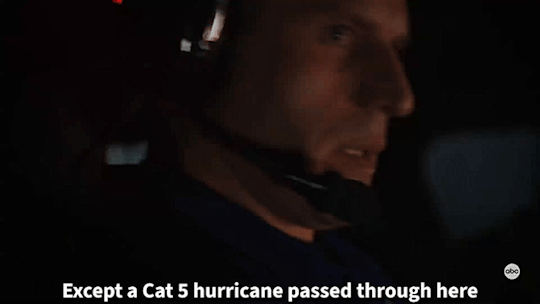
So it's a Cat 5, at least by the time the 118 set off on their journey to save Bathena.

Can a tropical storm intensify into a Cat 5 hurricane in hours?
No, not in real life. The record for most rapid intensification of a tropical cyclone is Hurricane Patricia in 2015, but it still took 24 hours. This doesn't mean the storm in 7x03 is completely made up. I believe I might have found the real life inspiration behind it.
Hurricane Otis (2023)
An area of low pressure formed on October 15, 2023 over the Pacific Ocean off the coast of Mexico. While it was during a significant El Niño period and the ocean temperature was record-breaking-ly high, strong vertical wind shear condition near the storm was predicted to hinder its development. It was originally forecasted to make landfall as a mere tropical storm. People in Acapulco went to bed on October 23 expecting moderate wind and light rainfall, many stopped seeking out updates of the storm.
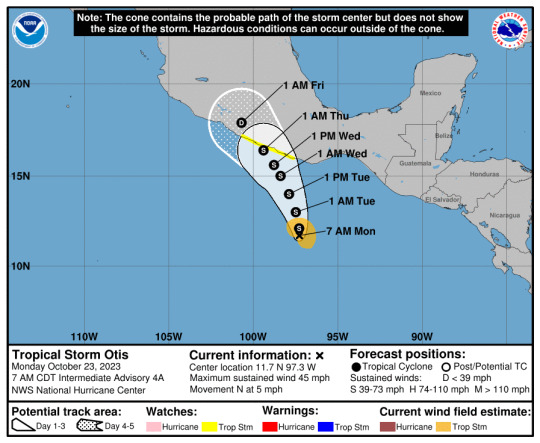
In the early hours of October 24, meteorologists at the NHC recognized from satellite images that tropical storm Otis was rapidly intensifying into a hurricane. The NHC officially upgraded the storm to a Cat 1 hurricane at 13:00 CDT and sent out a hurricane hunter aircraft to accurately measure the actual wind speed of the cyclone.
youtube
Satellite images provide a pretty good model to estimate the strength of a tropical cyclone, but the most reliable way to measure wind speed is still to fly an aircraft into it and physically measure it. When the hurricane hunter managed to fly into the eyewall of Otis, everyone realized they made a huge mistake: Otis had already become a Cat 3 hurricane, and it was expected to strengthen even more. It takes time to process data received from the hurricane hunter, so operationally the NHC still classified Otis as a Cat 1 hurricane until the next advisory was scheduled to come out, which was at 16:00 CDT, but by that time, Otis was already near Cat 4 strength. It was then officially upgraded to a Cat 5 hurricane at 22:00 CDT.

While Otis did take around 24 hours to intensify from a tropical storm to a catastrophic hurricane, if you just look at the NHC advisories, it pretty much jumped from a Cat 1 into a Cat 5 in 9 hours. It caused extensive damage to Acapulco when it made landfall because the city was severely underprepared. I suspect the cruise ship disaster arc was inspired by hurricane Otis because it happened just a month after the writer strike ended. Also, in 7x02 Maddie, a 911 dispatcher, was not aware that the tropical storm had already strengthened into a hurricane, which mirrors the unexpected development of hurricane Otis.

As the storm in universe was going back at sea and not making landfall, the authority was probably in even less of a hurry to find out what the actual strength of the cyclone was. So it could take them even longer to send in weather reconnaissance aircrafts. I can imagine the 911-verse version of the storm jumping from a Cat 2 to a Cat 5 officially in mere hours.
Can a helicopter fly in a Cat 5 hurricane?
Technically yes, but the chopper won't be doing the flying. The aforementioned NOAA Hurricane Hunter is a Lockheed P-3 Orion specifically modified and fortified for weather information collection. If this four-engined workhorse has to fight tooth and nail against crosswind and turbulence in order to fly into the eye of the storm, a small single engine helicopter definitely would not fair any better. It would end up getting tossed around, a particular strong downdraft might slam it into the ocean, or a prolong bout of severe turbulence might rip it apart. Luckily in 7x03, Tommy is not actually flying into a hurricane, he's trailing behind it.

NOAA Lockheed WP-3D Orion Hurricane Hunter
In a blink-and-you-miss-it exchange between Buck and Tommy, after Tommy says "a Cat 5 hurricane passed through here", Buck asks why he means by "passed through" and what they are flying in at the moment.

"iNTermITteNt sHOweRs"

When looking at the cross section of a tropical cyclone, you can see rows of rainbands around the eyewall, increasing in size the closer it is to the center of the storm. If you have ever experienced a tropical cyclone making landfall, you would know it starts with sporadic bouts of rainfall (aka intermittent showers), which then gradually increase in frequency and severity as the storm approaches. Once you are within 100-200 km of the eye, wind speed would become violent while the rainbands become so wide and close together it basically keeps raining until you are right under the eye.
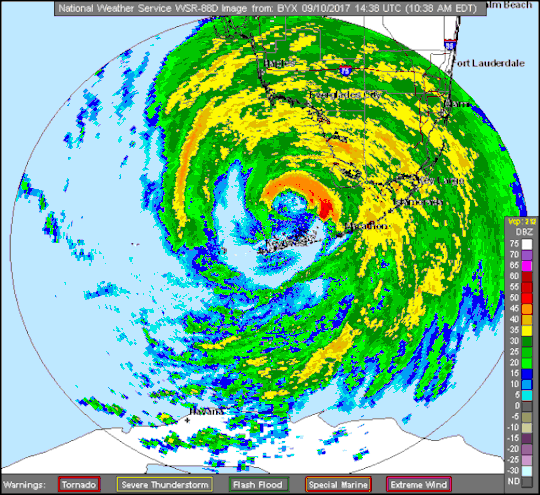
These are radar images of hurricane Irma (2017) making landfall in Florida. Bands of moderate to heavy rainfall spread across the inner core region of the cyclone, with still pretty consistent light to moderate precipitation between the gaps. But in the area further away from the eye in the southwest and southeast quadrants, you can see more squall line like patterns. Precipitation would abruptly begin and stop as you fly in and out of those outer lumps of clouds.
Wind speed in that area is no where near hurricane level even for a Cat 5 cyclone, it is typically under 100 km/h. That does not mean it is a safe condition to fly in. Because the outer rainbands of a cyclone are less affected by the storm's vortex dynamics, they behave more like regular thunderstorms. As you know, thunderstorms are big no-no's for aviation safety. In fact, the outer rainbands of a typhoon once contributed to a plane crash in Taiwan.
Conclusion
The hurricane in 7x03 is likely based on reality, albeit with a bit of exaggeration and a shortened timeline for dramatic effect. It is possible to fly and control a helicopter in this specific condition, but the danger is still quite high. Flying into a thunderstorm has a whole different set of risks associated with it, which I will tell you all about next time. Yes, part 3 of this series is "how to crash a helicopter with weather", so stay tuned.
#not a professional#but storm tracking is my cultural heritage#i'm never beating the dweeb allegation#911 abc#911 meta#tommy kinard#tagging the ship for fic reference#bucktommy#tevan#kinley#TW: hurricane#TW: extreme weather#TW: natural disaster
38 notes
·
View notes
Text

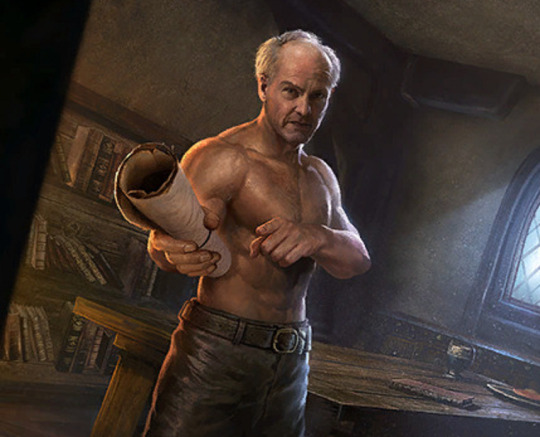
imperialism and science reading list
edited: by popular demand, now with much longer list of books
Of course Katherine McKittrick and Kathryn Yusoff.
People like Achille Mbembe, Pratik Chakrabarti, Rohan Deb Roy, Lizabeth Paravisini-Gebert, and Elizabeth Povinelli have written some “classics” and they track the history/historiography of US/European scientific institutions and their origins in extraction, plantations, race/slavery, etc.
Two articles I’d recommend as a summary/primer:
Zaheer Baber. “The Plants of Empire: Botanic Gardens, Colonial Power and Botanical Knowledge.” Journal of Contemporary Asia. May 2016.
Kathryn Yusoff. “The Inhumanities.” Annals of the American Association of Geographers. 2020.
Then probably:
Irene Peano, Marta Macedo, and Colette Le Petitcorps. “Introduction: Viewing Plantations at the Intersection of Political Ecologies and Multiple Space-Times.” Global Plantations in the Modern World: Sovereignties, Ecologies, Afterlives. 2023.
Sharae Deckard. “Paradise Discourse, Imperialism, and Globalization: Exploiting Eden.” 2010. (Chornological overview of development of knowledge/institutions in relationship with race, slavery, profit as European empires encountered new lands and peoples.)
Gregg Mitman. “Forgotten Paths of Empire: Ecology, Disease, and Commerce in the Making of Liberia’s Plantation Economy.” Environmental History. 2017, (Interesting case study. US corporations were building fruit plantations in Latin America and rubber plantations in West Africa during the 1920s. Medical doctors, researchers, and academics made a strong alliance these corporations to advance their careers and solidify their institutions. By 1914, the director of Harvard’s Department of Tropical Medicine was also simultaneously the director of the Laboratories of the Hospitals of the United Fruit Company, which infamously and brutally occupied Central America. This same Harvard doctor was also a shareholder in rubber plantations, and had a close personal relationship with the Firestone Tire and Rubber Company, which occupied West Africa.)
Elizabeth DeLoughrey. “Globalizing the Routes of Breadfruit and Other Bounties.” 2008. (Case study of how British wealth and industrial development built on botany. Examines Joseph Banks; Kew Gardens; breadfruit; British fear of labor revolts; and the simultaneous colonizing of the Caribbean and the South Pacific.)
Elizabeth DeLoughrey. “Satellite Planetarity and the Ends of the Earth.” 2014. (Indigenous knowledge systems; “nuclear colonialism”; US empire in the Pacific; space/satellites; the twentieth and twenty-first centuries.)
Fahim Amir. “Cloudy Swords.” e-flux Journal #115, February 2021. (”Pest control”; termites; mosquitoes; fear of malaria and other diseases during German colonization of Africa and US occupations of Panama and the wider Caribbean; origins of some US institutions and the evolution of these institutions into colonial, nationalist, and then NGO forms over twentieth century.)
Some of the earlier generalist classic books that explicitly looked at science as a weapon of empires:
Schiebinger’s Plants and Empire: Colonial Bioprospecting in the Atlantic World; Delbourgo’s and Dew’s Science and Empire in the Atlantic World; the anthology Colonial Botany: Science, Commerce, and Politics in the Early Modern World; Canzares-Esquerra’s Nature, Empire, and Nation: Explorations of the History of Science in the Iberian World.
One of the quintessential case studies of science in the service of empire is the British pursuit of quinine and the inoculation of their soldiers and colonial administrators to safeguard against malaria in Africa, India, and Southeast Asia at the height of their power. But there are so many other exemplary cases: Britain trying to domesticate and transplant breadfruit from the South Pacific to the Caribbean to feed laborers to prevent slave uprisings during the age of the Haitian Revolution. British colonial administrators smuggling knowledge of tea cultivation out of China in order to set up tea plantations in Assam. Eugenics, race science, biological essentialism, etc. in the early twentieth century. With my interests, my little corner of exposure/experience has to do mostly with conceptions of space/place; interspecies/multispecies relationships; borderlands and frontiers; Caribbean; Latin America; islands. So, a lot of these recs are focused there. But someone else would have better recs, especially depending on your interests. For example, Chakrabarti writes about history of medicine/healthcare. Paravisini-Gebert about extinction and Caribbean relationship to animals/landscape. Deb Roy focuses on insects and colonial administration in South Asia. Some scholars focus on the historiography and chronological trajectory of “modernity” or “botany” or “universities/academia,”, while some focus on Early Modern Spain or Victorian Britain or twentieth-century United States by region. With so much to cover, that’s why I’d recommend the articles above, since they’re kinda like overviews.Generally I read more from articles, essays, and anthologies, rather than full-length books.
Some other nice articles:
(On my blog, I’ve got excerpts from all of these articles/essays, if you want to search for or read them.)
Katherine McKittrick. “Dear April: The Aesthetics of Black Miscellanea.” Antipode. First published September 2021.
Katherine McKittrick. “Plantation Futures.” Small Axe. 2013.
Antonio Lafuente and Nuria Valverde. “Linnaean Botany and Spanish Imperial Biopolitics.” A chapter in: Colonial Botany: Science, Commerce, and Politics in the Early Modern World. 2004.
Kathleen Susan Murphy. “A Slaving Surgeon’s Collection: The Pursuit of Natural History through the British Slave Trade to Spanish America.” 2019. And also: “The Slave Trade and Natural Science.” In: Oxford Bibliographies in Atlantic History. 2016.
Timothy J. Yamamura. “Fictions of Science, American Orientalism, and the Alien/Asian of Percival Lowell.” 2017.
Elizabeth Bentley. “Between Extinction and Dispossession: A Rhetorical Historiography of the Last Palestinian Crocodile (1870-1935).” 2021.
Pratik Chakrabarti. “Gondwana and the Politics of Deep Past.” Past & Present 242:1. 2019.
Jonathan Saha. “Colonizing elephants: animal agency, undead capital and imperial science in British Burma.” BJHS Themes. British Society for the History of Science. 2017.
Zoe Chadwick. “Perilous plants, botanical monsters, and (reverse) imperialism in fin-de-siecle literature.” The Victorianist: BAVS Postgraduates. 2017.
Dante Furioso: “Sanitary Imperialism.” Jeremy Lee Wolin: “The Finest Immigration Station in the World.” Serubiri Moses. “A Useful Landscape.” Andrew Herscher and Ana Maria Leon. “At the Border of Decolonization.” All from e-flux.
William Voinot-Baron. “Inescapable Temporalities: Chinook Salmon and the Non-Sovereignty of Co-Management in Southwest Alaska.” 2019.
Rohan Deb Roy. “White ants, empire, and entomo-politics in South Asia.” The Historical Journal. 2 October 2019.
Rohan Deb Roy. “Introduction: Nonhuman Empires.” Comparative Studies of South Asia, Africa and the Middle East 35 (1). May 2015.
Lawrence H. Kessler. “Entomology and Empire: Settler Colonial Science and the Campaign for Hawaiian Annexation.” Arcadia (Spring 2017).
Sasha Litvintseva and Beny Wagner. “Monster as Medium: Experiments in Perception in Early Modern Science and Film.” e-flux. March 2021.
Lesley Green. “The Changing of the Gods of Reason: Cecil John Rhodes, Karoo Fracking, and the Decolonizing of the Anthropocene.” e-flux Journal Issue #65. May 2015.
Martin Mahony. “The Enemy is Nature: Military Machines and Technological Bricolage in Britain’s ‘Great Agricultural Experiment.’“ Environment and Society Portal, Arcadia. Spring 2021.
Anna Boswell. “Anamorphic Ecology, or the Return of the Possum.” 2018. And; “Climates of Change: A Tuatara’s-Eye View.”2020. And: “Settler Sanctuaries and the Stoat-Free State." 2017.
Katherine Arnold. “Hydnora Africana: The ‘Hieroglyphic Key’ to Plant Parasitism.” Journal of the History of Ideas - JHI Blog - Dispatches from the Archives. 21 July 2021.
Helen F. Wilson. “Contact zones: Multispecies scholarship through Imperial Eyes.” Environment and Planning. July 2019.
Tom Brooking and Eric Pawson. “Silences of Grass: Retrieving the Role of Pasture Plants in the Development of New Zealand and the British Empire.” The Journal of Imperial and Commonwealth History. August 2007.
Kirsten Greer. “Zoogeography and imperial defence: Tracing the contours of the Neactic region in the temperate North Atlantic, 1838-1880s.” Geoforum Volume 65. October 2015. And: “Geopolitics and the Avian Imperial Archive: The Zoogeography of Region-Making in the Nineteenth-Century British Mediterranean.” Annals of the Association of American Geographers. 2013,
Marco Chivalan Carrillo and Silvia Posocco. “Against Extraction in Guatemala: Multispecies Strategies in Vampiric Times.” International Journal of Postcolonial Studies. April 2020.
Laura Rademaker. “60,000 years is not forever: ‘time revolutions’ and Indigenous pasts.” Postcolonial Studies. September 2021.
Paulo Tavares. “The Geological Imperative: On the Political Ecology of the Amazon’s Deep History.” Architecture in the Anthropocene. Edited by Etienne Turpin. 2013.
Kathryn Yusoff. “Geologic Realism: On the Beach of Geologic Time.” Social Text. 2019. And: “The Anthropocene and Geographies of Geopower.” Handbook on the Geographies of Power. 2018. And: “Climates of sight: Mistaken visbilities, mirages and ‘seeing beyond’ in Antarctica.” In: High Places: Cultural Geographies of Mountains, Ice and Science. 2008. And:“Geosocial Formations and the Anthropocene.” 2017. And: “An Interview with Elizabeth Grosz: Geopower, Inhumanism and the Biopolitical.” 2017.
Mara Dicenta. “The Beavercene: Eradication and Settler-Colonialism in Tierra del Fuego.” Arcadia. Spring 2020.
And then here are some books:
Africa as a Living Laboratory: Empire, Development, and the Problem of Scientific Knowledge, 1870-1950 (Helen Tilley, 2011); Plants and Empire: Colonial Bioprospecting in the Atlantic World (Londa Schiebinger, 2004)
Red Coats and Wild Birds: How Military Ornithologists and Migrant Birds Shaped Empire (Kirsten A. Greer); The Empirical Empire: Spanish Colonial Rule and the Politics of Knowledge (Arndt Brendecke, 2016); Medicine and Empire, 1600-1960 (Pratik Chakrabarti, 2014)
Anglo-European Science and the Rhetoric of Empire: Malaria, Opium, and British Rule in India, 1756-1895 (Paul Winther); Peoples on Parade: Exhibitions, Empire, and Anthropology in Nineteenth-Century Britain (Sadiah Qureshi, 2011); Unfreezing the Arctic: Science, Colonialism, and the Transformation of Inuit Lands (Andrew Stuhl)
Fugitive Science: Empiricism and Freedom in Early African American Culture (Britt Rusert, 2017); Pasteur’s Empire: Bacteriology and Politics in France, Its Colonies, and the World (Aro Velmet, 2022); Colonizing Animals: Interspecies Empire in Myanmar (Jonathan Saha)
The Nature of German Imperialism: Conservation and the Politics of Wildlife in Colonial East Africa (Bernhard Gissibl, 2019); Curious Encounters: Voyaging, Collecting, and Making Knowledge in the Long Eighteenth Century (Edited by Adriana Craciun and Mary Terrall, 2019)
Frontiers of Science: Imperialism and Natural Knowledge in the Gulf South Borderlands, 1500-1850 (Cameron B. Strang); The Ends of Paradise: Race, Extraction, and the Struggle for Black Life in Honduras (Chirstopher A. Loperena, 2022); Mining Language: Racial Thinking, Indigenous Knowledge, and Colonial Metallurgy in the Early Modern Iberian World (Allison Bigelow, 2020); The Herds Shot Round the World: Native Breeds and the British Empire, 1800-1900 (Rebecca J.H. Woods); American Tropics: The Caribbean Roots of Biodiversity Science (Megan Raby, 2017); Producing Mayaland: Colonial Legacies, Urbanization, and the Unfolding of Global Capitalism (Claudia Fonseca Alfaro, 2023)
Domingos Alvares, African Healing, and the Intellectual History of the Atlantic World (James Sweet, 2011); A Temperate Empire: Making Climate Change in Early America (Anya Zilberstein, 2016); Educating the Empire: American Teachers and Contested Colonization in the Philippines (Sarah Steinbock-Pratt, 2019); Soundings and Crossings: Doing Science at Sea, 1800-1970 (Edited by Anderson, Rozwadowski, et al, 2016)
Possessing Polynesians: The Science of Settler Colonial Whiteness in Hawai’i and Oceania (Maile Arvin); Overcoming Niagara: Canals, Commerce, and Tourism in the Niagara-Great Lakes Borderland Region, 1792-1837 (Janet Dorothy Larkin, 2018); A Great and Rising Nation: Naval Exploration and Global Empire in the Early US Republic (Michael A. Verney, 2022); In the Museum of Man: Race, Anthropology, and Empire in France, 1850-1960 (Alice Conklin, 2013)
Visible Empire: Botanical Expeditions and Visual Culture in the Hispanic Enlightenment (Daniela Cleichmar, 2012); Tea Environments and Plantation Culture: Imperial Disarray in Eastern India (Arnab Dey, 2022); Drugs on the Page: Pharmacopoeias and Healing Knowledge in the Early Modern Atlantic World (Edited by Crawford and Gabriel, 2019)
Cooling the Tropics: Ice, Indigeneity, and Hawaiian Refreshment (Hi’ilei Kawehipuaakahaopulani Hobart, 2022); In Asian Waters: Oceanic Worlds from Yemen to Yokkohama (Eric Tagliacozzo); Yellow Fever, Race, and Ecology in Nineteenth-Century New Orleans (Urmi Engineer Willoughby, 2017); Turning Land into Capital: Development and Dispossession in the Mekong Region (Edited by Hirsch, et al, 2022); Mining the Borderlands: Industry, Capital, and the Emergence of Engineers in the Southwest Territories, 1855-1910 (Sarah E.M. Grossman, 2018)
Knowing Manchuria: Environments, the Senses, and Natural Knowledge on an Asian Borderland (Ruth Rogaski); Colonial Fantasies, Imperial Realities: Race Science and the Making of Polishness on the Fringes of the German Empire, 1840-1920 (Lenny A. Urena Valerio); Against the Map: The Politics of Geography in Eighteenth-Century Britain (Adam Sills, 2021)
Under Osman’s Tree: The Ottoman Empire, Egypt, and Environmental History (Alan Mikhail, 2017); Imperial Nature: Joseph Hooker and the Practices of Victorian Science (Jim Endersby); Proving Grounds: Militarized Landscapes, Weapons Testing, and the Environmental Impact of U.S. Bases (Edited by Edwin Martini, 2015)
Colonial Botany: Science, Commerce, and Politics in the Early Modern World (Multiple authors, 2007); Space in the Tropics: From Convicts to Rockets in French Guiana (Peter Redfield); Seeds of Empire: Cotton, Slavery, and the Transformation of the Texas Borderlands, 1800-1850 (Andrew Togert, 2015); Dust Bowls of Empire: Imperialism, Environmental Politics, and the Injustice of ‘Green’ Capitalism (Hannah Holleman, 2016); Postnormal Conservation: Botanic Gardens and the Reordering of Biodiversity Governance (Katja Grotzner Neves, 2019)
Botanical Entanglements: Women, Natural Science, and the Arts in Eighteenth-Century England (Anna K. Sagal, 2022); The Platypus and the Mermaid and Other Figments of the Classifying Imagination (Harriet Ritvo); Rubber and the Making of Vietnam: An Ecological History, 1897-1975 (Michitake Aso); A Billion Black Anthropocenes or None (Kathryn Yusoff, 2018); Staple Security: Bread and Wheat in Egypt (Jessica Barnes, 2023); No Wood, No Kingdom: Political Ecology in the English Atlantic (Keith Pluymers); Planting Empire, Cultivating Subjects: British Malaya, 1768-1941 (Lynn Hollen Lees, 2017); Fish, Law, and Colonialism: The Legal Capture of Salmon in British Columbia (Douglas C. Harris, 2001); Everywhen: Australia and the Language of Deep Time (Edited by Ann McGrath, Laura Rademaker, and Jakelin Troy); Subject Matter: Technology, the Body, and Science on the Anglo-American Frontier, 1500-1676 (Joyce Chaplin, 2001)
American Lucifers: The Dark History of Artificial Light, 1750-1865 (Jeremy Zallen); Ruling Minds: Psychology in the British Empire (Erik Linstrum, 2016); Lakes and Empires in Macedonian History: Contesting the Water (James Pettifer and Mirancda Vickers, 2021); Inscriptions of Nature: Geology and the Naturalization of Antiquity (Pratik Chakrabarti); Seeds of Control: Japan’s Empire of Forestry in Colonial Korea (David Fedman)
Do Glaciers Listen?: Local Knowledge, Colonial Encounters, and Social Imagination (Julie Cruikshank); The Fishmeal Revolution: The Industrialization of the Humboldt Current Ecosystem (Kristin A. Wintersteen, 2021); The Earth on Show: Fossils and the Poetics of Popular Science, 1802-1856 (Ralph O’Connor); An Imperial Disaster: The Bengal Cyclone of 1876 (Benjamin Kingsbury, 2018); Geographies of City Science: Urban Life and Origin Debates in Late Victorian Dublin (Tanya O’Sullivan, 2019)
American Hegemony and the Postwar Reconstruction of Science in Europe (John Krige, 2006); Carnal Knowledge and Imperial Power: Race and the Intimate in Colonial Rule (Ann Laura Stoler, 2002); Rivers of the Sultan: The Tigris and Euphrates in the Ottoman Empire (Faisal H. Husain, 2021);
The Sanitation of Brazil: Nation, State, and Public Health, 1889-1930 (Gilberto Hochman, 2016); The Imperial Security State: British Colonial Knowledge and Empire-Building in Asia (James Hevia); Japan’s Empire of Birds: Aristocrats, Anglo-Americans, and Transwar Ornithology (Annika A. Culver, 2022)
Moral Ecology of a Forest: The Nature Industry and Maya Post-Conservation (Jose E. Martinez, 2021); Sound Relations: Native Ways of Doing Music History in Alaska (Jessica Bissette Perea, 2021); Citizens and Rulers of the World: The American Child and the Cartographic Pedagogies of Empire (Mashid Mayar); Anthropology and Antihumanism in Imperial Germany (Andrew Zimmerman, 2001)
The Botany of Empire in the Long Eighteenth Century (Multiple authors, 2016); The Nature of Slavery: Environment and Plantation Labor in the Anglo-Atlantic World (Katherine Johnston, 2022); Seeking the American Tropics: South Florida’s Early Naturalists (James A. Kushlan, 2020); The Postwar Origins of the Global Environment: How the United Nations Built Spaceship Earth (Perrin Selcer, 2018)
The Colonial Life of Pharmaceuticals: Medicines and Modernity in Vietnam (Laurence Monnais); Quinoa: Food Politics and Agrarian Life in the Andean Highlands (Linda J. Seligmann, 2023) ; Critical Animal Geographies: Politics, intersections and hierarchies in a multispecies world (Edited by Kathryn Gillespie and Rosemary-Claire Collard, 2017); Spawning Modern Fish: Transnational Comparison in the Making of Japanese Salmon (Heather Ann Swanson, 2022); Imperial Visions: Nationalist Imagination and Geographical Expansion in the Russian Far East, 1840-1865 (Mark Bassin, 2000); The Usufructuary Ethos: Power, Politics, and Environment in the Long Eighteenth Century (Erin Drew, 2022)
Intimate Eating: Racialized Spaces and Radical Futures (Anita Mannur, 2022); On the Frontiers of the Indian Ocean World: A History of Lake Tanganyika, 1830-1890 (Philip Gooding, 2022); All Things Harmless, Useful, and Ornamental: Environmental Transformation Through Species Acclimitization, from Colonial Australia to the World (Pete Minard, 2019)
Practical Matter: Newton’s Science in the Service of Industry and Empire, 1687-1851 (Margaret Jacob and Larry Stewart); Visions of Nature: How Landscape Photography Shaped Setller Colonialism (Jarrod Hore, 2022); Timber and Forestry in Qing China: Sustaining the Market (Meng Zhang, 2021); The World and All the Things upon It: Native Hawaiian Geographies of Exploration (David A. Chang);
Deep Cut: Science, Power, and the Unbuilt Interoceanic Canal (Christine Keiner); Writing the New World: The Politics of Natural History in the Early Spanish Empire (Mauro Jose Caraccioli); Two Years below the Horn: Operation Tabarin, Field Science, and Antarctic Sovereignty, 1944-1946 (Andrew Taylor, 2017); Mapping Water in Dominica: Enslavement and Environment under Colonialism (Mark W. Hauser, 2021)
To Master the Boundless Sea: The US Navy, the Marine Environment, and the Cartography of Empire (Jason Smith, 2018); Fir and Empire: The Transformation of Forests in Early Modern China (Ian Matthew Miller, 2020); Breeds of Empire: The ‘Invention’ of the Horse in Southeast Asia and Southern Africa 1500-1950 (Sandra Swart and Greg Bankoff, 2007)
Science on the Roof of the World: Empire and the Remaking of the Himalaya (Lachlan Fleetwood, 2022); Cattle Colonialism: An Environmental History of the Conquest of California and Hawai’i (John Ryan Fisher, 2017); Imperial Creatures: Humans and Other Animals in Colonial Singapore, 1819-1942 (Timothy P. Barnard, 2019)
An Ecology of Knowledges: Fear, Love, and Technoscience in Guatemalan Forest Conservation (Micha Rahder, 2020); Empire and Ecology in the Bengal Delta: The Making of Calcutta (Debjani Bhattacharyya, 2018); Imperial Bodies in London: Empire, Mobility, and the Making of British Medicine, 1880-1914 (Kristen Hussey, 2021)
Biotic Borders: Transpacific Plant and Insect Migration and the Rise of Anti-Asian Racism in America, 1890-1950 (Jeannie N. Shinozuka); Coral Empire: Underwater Oceans, Colonial Tropics, Visual Modernity (Ann Elias, 2019); Hunting Africa: British Sport, African Knowledge and the Nature of Empire (Angela Thompsell, 2015)
#multispecies#ecologies#tidalectics#geographic imaginaries#book recommendations#reading recommendations#reading list
332 notes
·
View notes
Text
I watched and ranked every Tom Cruise movie so you don’t have to
Simple premise: 45 movies. One actor. Ranked from worst to best, on a sliding scale of -2 to 6 (scoring will make sense as you read).
Technical score is judged on how well the plot is constructed and how well the characters grow and serve their role in the narrative throughout the movie, as well as how well the narrative is written. Enjoyment score is judged on how much I liked the movie: no stars = didn’t like, 1 star = like, 2 star = really like. Bonus star is awarded at my discretion, for reasons such as costuming, soundtrack, particularly stand out acting, etc. Sexism modifier is a negative if women are treated badly, but can add an extra point if the movie gives women their rights. Overall score at the end determines where they sit in the rankings of this post, with movies having the same score in the order I liked them most.
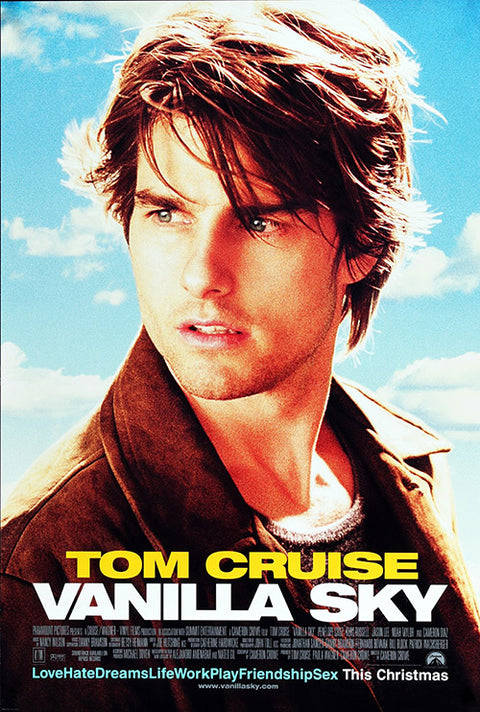
Vanilla Sky (2001) – David Aames (Starring)
One sentence summary: A man’s reality begins to warp and he is forced to question what is real, and what isn’t.
Technical: -
Enjoyment: -
Bonus: -
Sexism: 💥💥
Overall: 💥💥
Review: This is a bad movie. Weird acting throughout. Nonsensical plot. Terrible treatment of the women. Definitely the worst movie Tom Cruise has starred in!
_

Tropic Thunder (2008) – Les Grossman (Supporting)
One sentence summary: Five actors who are filming a war movie are dropped into a real war zone completely unaware, and must use their wits to escape back to their movie set.
Technical: ⭐
Enjoyment: -
Bonus: -
Sexism: 💥💥
Overall: 💥
Review: LOTS of choices made in this movie! Very few of them good! Why was RDJ in blackface? Was I supposed to find this entertaining? Was any of this necessary? Doubtful. Jack Black and Jay Baruchel had great comedic presences, and honestly the acting and casting was spot on for what the movie wanted, which is why I gave it one technical star.
_
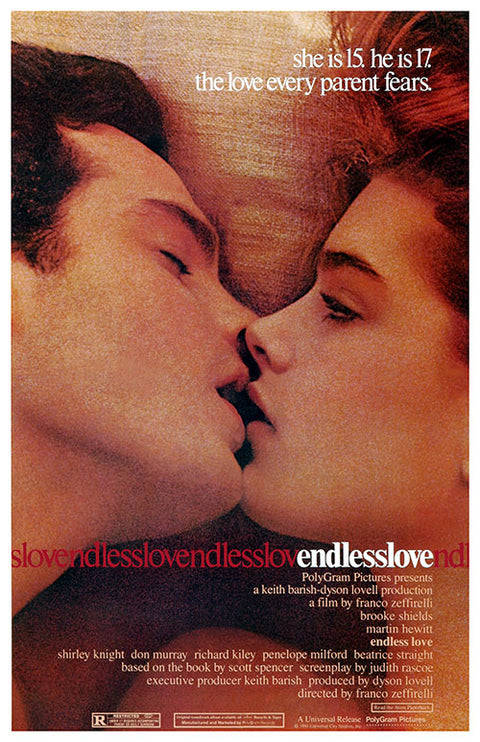
Endless Love (1981) – Billy (Cameo)
One sentence summary: A teenage romance goes wrong when a boyfriend burns down his girlfriend’s house in an attempt to win the approval of her parents.
Technical: ⭐
Enjoyment: -
Bonus: -
Sexism: 💥💥
Overall: 💥
Review: They made movies differently in the 80s, I think. The plot is insane, the main characters unrelatable – or maybe I’m just too long out of high school. In any case, this was Tom Cruise’s debut film, and he did it in booty shorts while advising his friend to pretend to set his girlfriend’s house on fire, leading to him actually setting his girlfriend’s house on fire, and it was the best part of this movie. What a way to start a career.
_
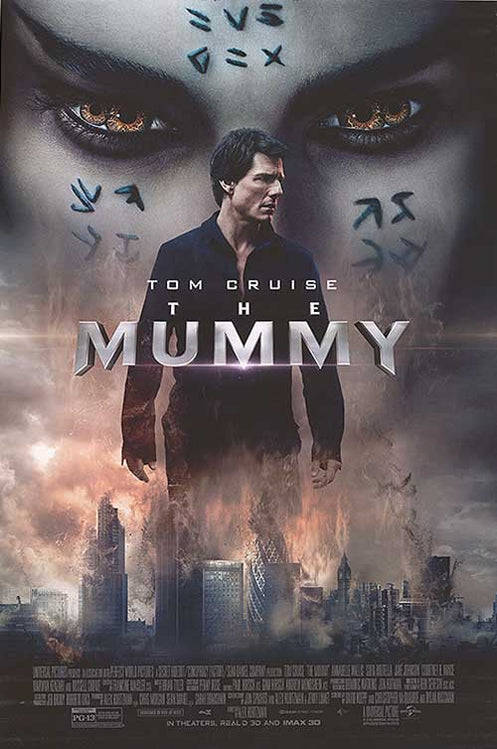
The Mummy (2017) – Sgt. Nick Morton (Starring)
One sentence summary: After disrupting a tomb, Nick Morton (Tom Cruise) must defeat The Mummy.
Technical: ⭐
Enjoyment: -
Bonus: -
Sexism: 💥💥
Overall: 💥
Review: Yeah… there’s a reason this movie is a meme. Cruise’s acting feels weak, the plot is verging on nonsensical, and the special effects made me laugh. A rare miss in Cruise’s later years of acting!
_
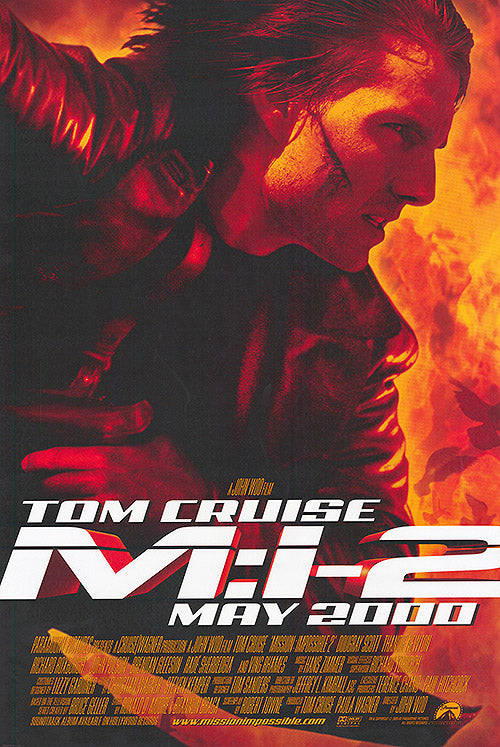
Mission: Impossible 2 (2002) – Ethan Hunt (Starring)
One sentence summary: Ethan Hunt (Tom Cruise) must stop a plague by teaming up with a thief who knows the man who intends to kick off the disaster.
Technical: -
Enjoyment: -
Movie: ⭐
Sexism: 💥💥
Overall: 💥
Review: One star is discretionarily awarded because it’s set in Sydney and I recognise a lot of the locations they filmed in. Though I have no clue how Luther was getting internet connection on a sheep farm out somewhere in western NSW. Did they have satellite internet in 2002?
_
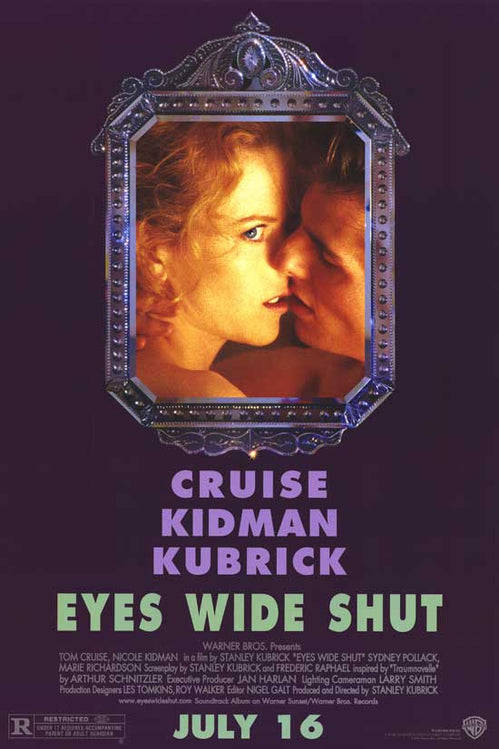
Eyes Wide Shut (1999) – Dr. William Harford (Starring)
One sentence summary: After his wife confesses to fantasising about cheating on him, Dr William Harford (Tom Cruise) toys with the idea of actually cheating on her, and has an insane night out in the process.
Technical: ⭐
Enjoyment: -
Bonus: -
Sexism: 💥💥
Overall: 💥
Review: Well SOMETHING happened in this movie. Hot tip, do not go into this one blind on Saturday movie night with your family in attendance. I think, personally, that Dr Hartford could have just sat down with his wife and asked her if she wanted to get into roleplay instead of doing all that. Also, did we really need to see Nicole Kidman pissing? I just really think that wasn’t necessary.
_

Austin Powers in Goldmember (2002) – Himself as Austin Powers (Cameo)
One sentence summary: Austin Powers must stop Dr. Evil from world domination by travelling back in time to 1975.
Technical: -
Enjoyment: -
Bonus: -
Sexism: 💥
Overall: 💥
Review: This is some blend of satire and crack, and I’m not really enjoying the flavour. Tom Cruise’s cameo is pretty funny, though.
_

War of the Worlds (2005) – Ray Ferrier (Starring)
One sentence summary: When aliens land and start destroying Earth, Ray Ferrier (Tom Cruise) must do all he can to keep his family alive.
Technical: -
Enjoyment: -
Bonus: -
Sexism: 💥
Overall: 💥
Review: Well… this exists, I guess. Some of these old sci fi novels should not be made into movies. They were not meant for the big screen. Not even Tom Cruise can save this one.
_
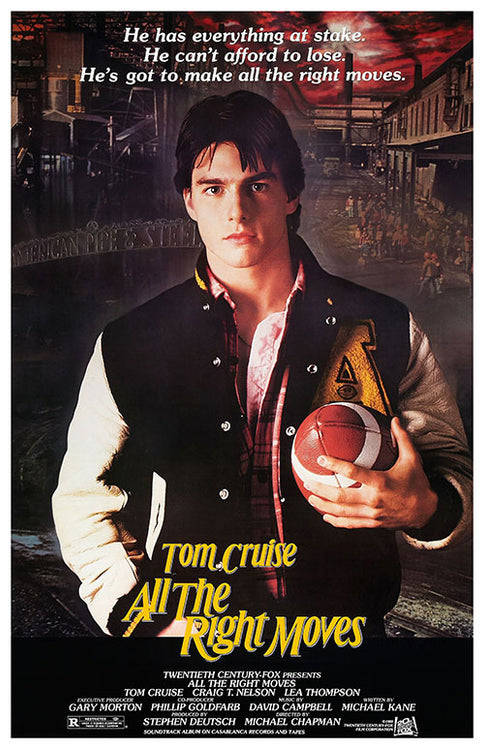
All the Right Moves (1983) – Stefen Djordjevic (Starring)
One sentence summary: After a disagreement with a teacher, Stefen (Tom Cruise) thinks that he might never get to college and never leave his hometown.
Technical: ⭐
Enjoyment: -
Bonus: -
Sexism: 💥
Overall: 💥
Review: This sure exists. Very unmemorable, even while I was watching it. Generic in music, plot, character, and romance. Anticlimactic ending too!
_

The Color of Money (1986) – Vincent Lauria (Starring)
One sentence summary: Vincent Lauria (Tom Cruise) tries to make money by playing pool, but is too good at it for the betting scheme his mentor attempts to set up in order to get rich.
Technical: ⭐
Enjoyment: -
Bonus: -
Sexism: 💥
Overall: 💥
Review: I will admit I found this movie fairly uninteresting, though I enjoyed Tom Cruise’s wild haircut. Nothing but respect for Vincent’s “Vince” shirt, however.
_

Days of Thunder (1990) – Cole Trickle (Starring)
One sentence summary: A street racer is pulled onto the Nascar track, where his attitude gets him into trouble with his team, other drivers, and the woman he’s interested in.
Technical: ⭐
Enjoyment: ⭐
Bonus: -
Sexism: 💥💥
Overall: ⭐
Review: Two sexism bangs for Nicole Kidman’s ‘romance’ scenes (girl why did you come back to do more movies with this man). The car racing is pretty cool though. I am partial to a good car race, I must admit.
_
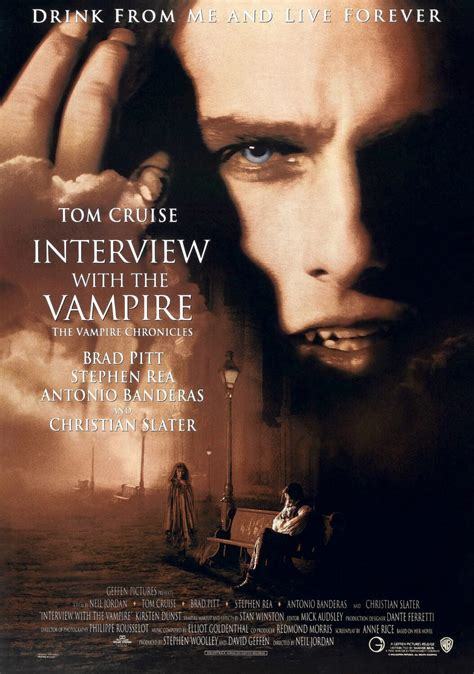
Interview with the Vampire (1994) – Lestat de Lioncourt (Supporting)
One sentence summary: A vampire sits down with a reporter to tell the story of his life: one that starts with how he was turned into the vampire, and continues to the present day.
Technical: ⭐
Enjoyment: -
Bonus: -
Sexism: 💥
Overall: ⭐
Review: Lots of stuff going on in this movie. However, mostly I agree with the well known review that spawned a thousand memes: “Not gay enough.”
_
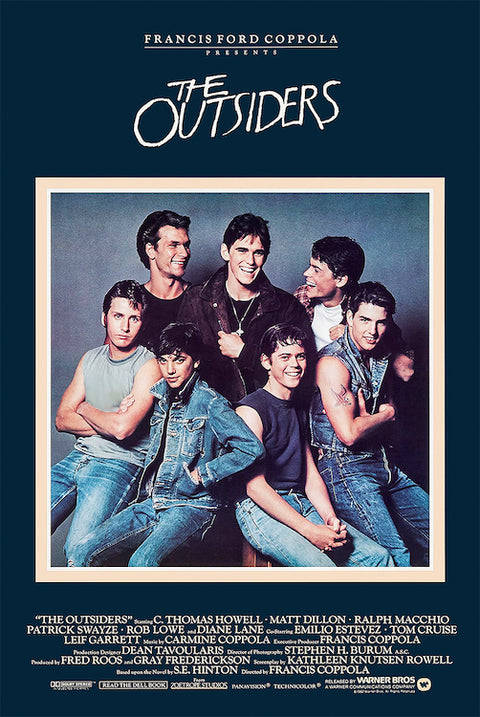
The Outsiders (1983) – Steve Randle (Supporting)
One sentence summary: Two friends are caught up in the complicated politics between the “Socs” and “greasers” gangs; when one friend accidentally kills a rival, they go on the run from the police before returning home to face court, their family, and the opposing gang.
Technical: ⭐
Enjoyment: ⭐
Bonus: -
Sexism: 💥
Overall: ⭐
Review: Patrick Swayze is kinda carrying this movie honestly. Though Tom Cruise’s denim on denim, wild accent, cake-stuffed-in-face beat ‘em up sure is a performance too. You can tell this is an old movie by how affectionate the boys were allowed to be with each other. Absolutely none of that around nowadays.
_
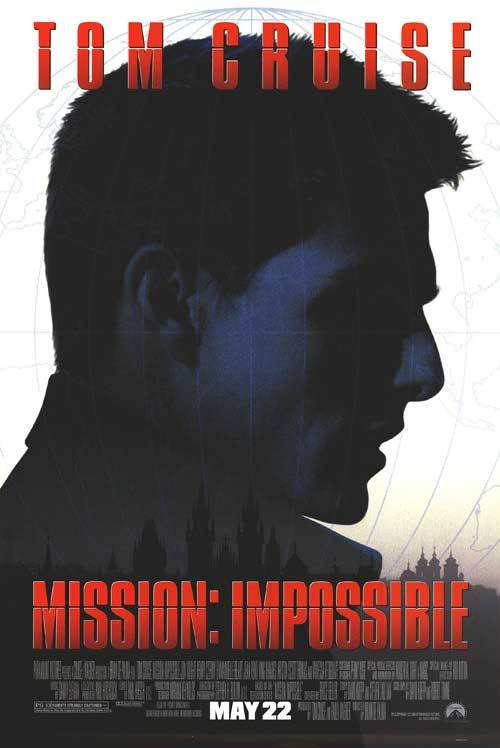
Mission: Impossible (1996) – Ethan Hunt (Starring)
One sentence summary: When his team of Impossible Mission Force agents are killed, Ethan Hunt (Tom Cruise) must track down the person responsible.
Technical: ⭐
Enjoyment: ⭐
Bonus: ⭐
Sexism: 💥💥
Overall: ⭐
Review: While there are many (many, many, many) liberties taken with reality in order for this movie to be made, it is iconic for a reason. That being said, the wild subplot of Ethan’s tutor trying to set Ethan up with his wife sure was something! Bonus points for starting such an iconic franchise and, of course, the spy movie scene of dropping from the ceiling and barely not hitting the floor.
_
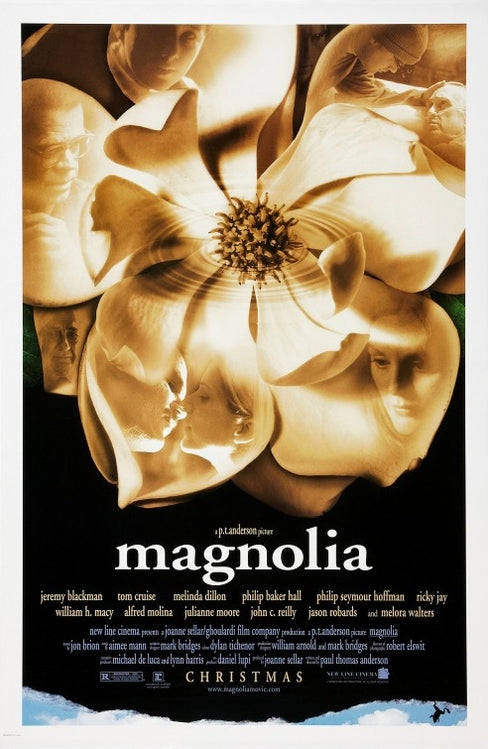
Magnolia (1999) – Frank T.J. Mackey (Supporting)
One sentence summary: I don’t know how to summarise this movie. Taking suggestions from the audience.
Technical: ⭐⭐
Enjoyment: ⭐
Bonus: -
Sexism: 💥💥
Overall: ⭐
Review: I don’t know how to review this movie. Was NOT expecting the frogs, that came out of left field to be sure. I think Kubrick’s vision passed me over. Anyway, two sexism bangs for having Tom Cruise invent the incel motivational speaker 😭
_
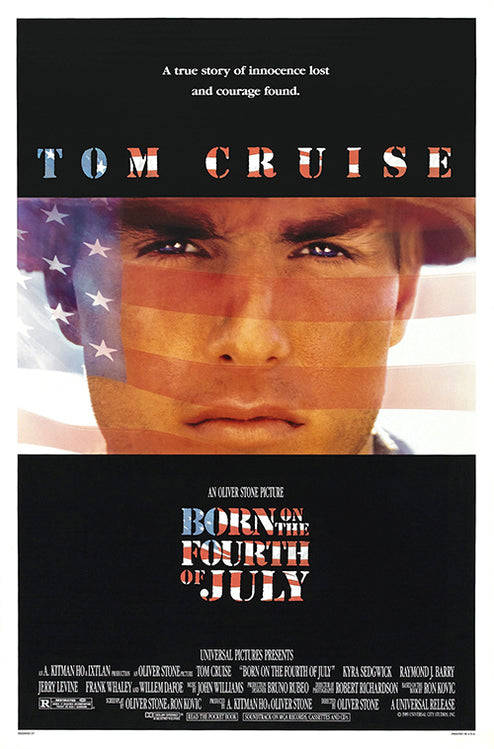
Born on the Fourth of July (1989) – Ron Kovic (Starring)
One sentence summary: Ron Kovic (Tom Cruise) signs up to the Army, fights in the war, and deals with the repercussions when he comes home.
Technical: ⭐
Enjoyment: ⭐
Bonus: ⭐
Sexism: 💥
Overall: ⭐⭐
Review: This movie suffers from the same problem that all movies which are ‘true stories’ have, which is that life rarely neatly fits into a narrative structure, but it manages fairly well anyway. Bonus points given for the BTS trivia that apparently Cruise asked to be injected with some drug that would temporarily paralyse him so he could experience what it was like to improve his acting??? Cruise’s insurance company wisely refused to let him do this.
_

Minority Report (2002) – John Anderton (Starring)
One sentence summary: In a future where murderers are arrested before they commit their crime, Chief John Anderton (Tom Cruise) is predicted to kill a man he’s never met – and must escape his own police force in order to prove his innocence.
Technical: ⭐
Enjoyment: ⭐
Bonus: ⭐
Sexism: 💥
Overall: ⭐⭐
Review: I had to watch this about 10 times in high school so I was hesitant to come back to it now, but it’s an okay watch when I’m not discussing its contribution to dystopian literature.
_

Mission: Impossible – Dead Reckoning Part One (2023) – Ethan Hunt (Starring)
One sentence summary: On the hunt for the two parts of a key which will allow him to control a new AI threat, Ethan Hunt (Tom Cruise) must sacrifice in order to save the world.
Technical: -
Enjoyment: ⭐
Bonus: -
Sexism: ⭐
Overall: ⭐⭐
Review: Media very rarely gets plots around AI right, and this one unfortunately misses the mark. It asks no new or interesting questions about how AI is being used or will be used in our modern world, and seems to take a detour from previous Mission Impossible films in terms of tone and consistency of plot. However, Haley Atwell slaps absolute ass, and there are genuinely funny and enjoyable scenes scattered at random throughout the movie, so it definitely could be worse.
_
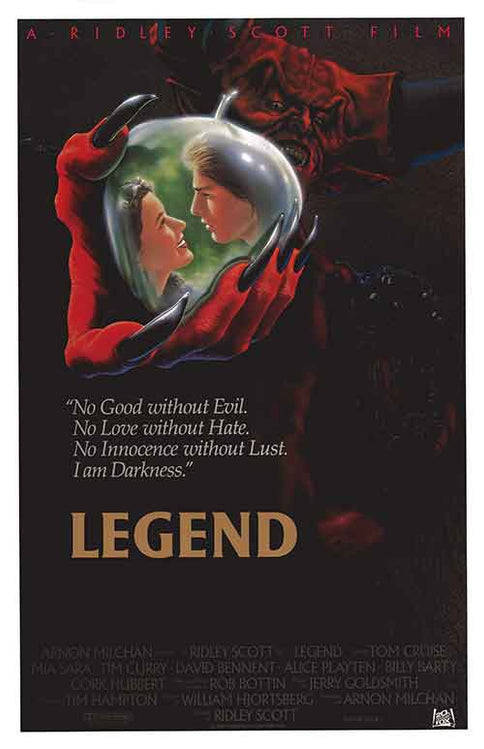
Legend (1985) – Jack (Starring)
One sentence summary: After a princess plunges her kingdom into endless winter, she must reverse the curse to save the land.
Technical: ⭐
Enjoyment: -
Bonus: -
Sexism: ⭐
Overall: ⭐⭐
Review: A win for diversity! The princess almost ends the world, and also is allowed to save it! Special effects were pretty decent for the mid-80s, even if the plot was a bit basic. Seeing Tom Cruise go all Tarzan and also have a sword was very good, however.
_

Oblivion (2013) – Jack Harper (Starring)
One sentence summary: Jack Harper’s (Tom Cruise) mission in life is to protect the last of humanity – or so he thinks.
Technical: ⭐
Enjoyment: ⭐
Bonus: -
Sexism: -
Overall: ⭐⭐
Review: Morgan Freeman steals the show here. I enjoyed the plot twist both at the middle and the end of the movie, and the ending scene wrapped everything up emotionally.
_

American Made (2017) – Barry Seal (Starring)
One sentence summary: Barry Seal (Tom Cruise) works triple time for big money while dodging the law, taking aerial photos for the CIA, smuggling cocaine into the USA for the Medellín Cartel, and delivering guns to the Nicaraguan Contras based in Honduras.
Technical: ⭐
Enjoyment: ⭐
Bonus: ⭐
Sexism: 💥
Overall: ⭐⭐
Review: A movie that’s “based on a true story” and which does it right. The informational sections were balanced neatly with the character development and exploration of what this amount of money might do to a family.
_

Rock of Ages (2012) – Stacee Jaxx (Supporting)
One sentence summary: Two burgeoning singers meet at a rock bar, which needs to put on a hell of a show in order to avoid closing down.
Technical: ⭐
Enjoyment: ⭐
Bonus: ⭐
Sexism: 💥
Overall: ⭐⭐
Review: Extra points for the killer soundtrack. Otherwise, this movie is fairly unmemorable. Tom Cruise’s hairstyle sure was a choice though!
_

Taps (1983) – Capt. David Shawn (Supporting)
One sentence summary: When the students of a military boarding school hear that their school is to be shut down, they stage a protest that rapidly spirals out of hand.
Technical: ⭐
Enjoyment: ⭐
Bonus: ⭐
Sexism: 💥
Overall: ⭐⭐
Review: It’s hard to have sexism in a movie where there are literally no women, so this one is getting a default 💥. Other than the fact that women don’t exist, this was a pretty good movie, with the extra star granted for the depth of character portrayed, Tom Cruise’s buzzcut, and the acting of all the younger kids on set.
_

Rain Man (1988) – Charlie Babbitt (Starring)
One sentence summary: After his father dies, Charlie Babbitt (Tom Cruise) discovers he has a brother after he inherits everything in his father’s will.
Technical: ⭐
Enjoyment: ⭐
Bonus: ⭐
Sexism: 💥
Overall: ⭐⭐
Review: I really liked how this movie showed that despite how money-hungry Charlie Babbitt originally appears, he goes through an entire journey where he realises how important family is – no matter what form that takes. To see a main male character reflect and regret on his poor relationship with his father and also express the ups and downs of other emotions throughout this movie is refreshing, and Tom Cruise does an excellent job at portraying the journey taken. While it’s obvious he prefers action movies, I actually think Cruise’s true strength is in the dramas he does.
_

Top Gun (1986) – Lt. Pete "Maverick" Mitchell (Starring)
One sentence summary: Pete Mitchell (Tom Cruise) attempts to prove that he’s the best Naval Aviator by winning the Top Gun trophy, and also by winning the heart of his teacher too.
Technical: ⭐
Enjoyment: ⭐⭐
Bonus: ⭐
Sexism: 💥💥
Overall: ⭐⭐
Review: Wow. There’s a LOT going on here. It’s impossible to discuss Top Gun without mentioning the blistering sexism that pervades this movie, but since it’s about the Navy in the 80s, no one should be surprised it’s there. However, it also manages to be one of the gayest movies of the decade. Contains multitudes! Bonus points for Val Kilmer’s amazing performance and the insane homoerotic tension that is as inextricable from this movie as the sexism is.
_

Valkyrie (2008) – Colonel Claus von Stauffenberg (Starring)
One sentence summary: Before D-Day, a plot to kill Hilter from within the German government unfolds.
Technical: ⭐⭐
Enjoyment: ⭐
Bonus: ⭐
Sexism: 💥
Overall: ⭐⭐⭐
Review: Full of tension and drama, this is a ‘based on a true story’ movie that’s done right (probably because liberties were no doubt taken). A different type of WWII movie, I definitely liked this one. Bonus star for the set and costuming, which were truly excellent.
_

Lions for Lambs (2007) – Senator Jasper Irving (Supporting)
One sentence summary: Over 90 minutes in real time, 2 marines defend a position in Afghanistan, a Senator is interviewed on a new military strategy, and a college student decides if he’s going to commit to his classes or not.
Technical: ⭐
Enjoyment: ⭐
Bonus: ⭐
Sexism: -
Overall: ⭐⭐⭐
Review: I’m not American, and it’s not 2007 anymore, but this still hit really hard. Excellent use of the real time narrative to drive the story home deliver the message to the audience.
_

Cocktail (1988) – Brian Flanagan (Starring)
One sentence summary: While attending university, Brian Flanagan finds work as a bartender to pay the bills before he finds the way he’s going to get rich – and finds friendship and love along the way.
Technical: ⭐
Enjoyment: ⭐
Bonus: ⭐
Sexism: -
Overall: ⭐⭐⭐
Review: This soundtrack slaps, it’s a cute romcom, and there are cool bartending tricks scattered throughout. It also deals with some more serious topics, but these add to the depth of character and the main relationship to bring extra flavour to the movie.
_

Losin' It (1983) – Woody (Starring)
One sentence summary: Four friends travel to Mexico in order to party hard and lose their virginity.
Technical: ⭐
Enjoyment: ⭐⭐
Bonus: -
Sexism: -
Overall: ⭐⭐⭐
Review: The second half of the movie is far better than the first, with a spiralling series of events that had me laughing at every new development. Tom Cruise playing the straight laced kid was a genius decision, and I can see why he repeated this type of role a few times in future movies.
_

Far and Away (1992) – Joseph Donelly (Starring)
One sentence summary: Irishman Joseph Donelly (Tom Cruise) joins forces with Shannon Christie (Nicole Kidman) to cross the sea to America, where they aspire to travel to Oklahoma in order to start a new life, where land is being given away for free.
Technical: ⭐
Enjoyment: ⭐
Bonus: ⭐
Sexism: ⭐
Overall: ⭐⭐⭐⭐
Review: Very much the best of the movies that Nicole Kidman and Tom Cruise collaborated on, I did enjoy this one from start to finish. The costumes are great, but the bonus points go to how bloody and beat up Tom Cruise consistently is in this movie. Yes, go and get back into that fighting ring again. It’s good for my health.
(continued in the next reblog because tumblr will only let me add 30 images per post)
#tom cruise#movies#reviews#Endless Love#Taps#The Outsiders#Losin' It#Risky Business#All the Right Moves#Legend#Top Gun#The Color of Money#Cocktail#Rain Man#Born on the Fourth of July#Days of Thunder#Far and Away#A Few Good Men#The Firm#Interview with the Vampire#Mission: Impossible#Jerry Maguire#Eyes Wide Shut#Magnolia#Mission: Impossible 2#Vanilla Sky#Minority Report#Austin Powers in Goldmember#The Last Samurai#Collateral
79 notes
·
View notes
Text
Wildfires sweep Amazon as Brazil suffers worst drought on record
Destruction of forest combined with low rainfall exacerbate effects of climate change

Brazil is fighting wildfires that have cast smoke across swaths of its territory, fuelled by heatwaves and the nation’s worst drought on record.
The area of the Amazon in Brazil, home to about two-thirds of the world’s largest rainforest, suffered its highest number of blazes for 14 years in August, according to the national space research agency Inpe.
Other biomes scorched by flames include the vast tropical savannah called the Cerrado that stretches across the centre of the country and the Pantanal wetlands in its south.
The total area burnt this year in Brazil estimated at 34.5mn hectares — or about the size of Germany — more than double the average for the same period across 2012-2023, according to the Global Wildfire Information System (GWIS), a joint Copernicus and Nasa initiative that uses thermal anomalies detected by satellite to assess the burnt area.
Continue reading.
#brazil#brazilian politics#politics#environmentalism#environmental justice#brazil forest fires 2024#image description in alt#mod nise da silveira
26 notes
·
View notes
Text
Sketches of the Atantaw clan

Just silly sketches of members of Atantaw clan:
1. Shi'rin is dancing special dance - before the Cold the tribe goes hunting for replenishing supplies for "winter" (remember, there are no winter in Pandora - it's a tropical satellite, Atan'taw live in demiseason region - well, demiseason like on Earth)
After the hunt they feast - the best hunters dance with their weapons - The celebration in honor of the Great Hunt
P.S. Atan'taw have shurikens

(Thanks to this world for Hans Giger and his fleshy art style who inspired others)
2. Ri'oto te Atan'tirea Mistx'ite - the mother of Shi'rin and the tsahik of Atan'taw clan
The skull (the "horns" to be specific) on her chest is used for the same reason as the Ronal's shell or Mo'at's spike
3. Pet'ro te Atan'tirea Sewar'itan and his daughter Amral te Atan'tirea Khta'ra'ite - he's wearing traditional Tum'nan clothes (one-handed robe - it was very useful back then when Tum'nan - their ancestors - prefer to hunt in the daylight and ride a "horse".
#avatar 2009#avatar the way of water#avatar edits#avatar#avatar fanart#avatar oc#my art#oc#oc art#original character#artwork#navi oc#na'vi avatar#na'vi art#avatar pandora#na'vi#james cameron avatar#snow na'vi#ice na'vi#atantaw clan#atantawclan#atantaw#desert na'vi#tumnan clan#tumnanclan#tumnan#alraunedrow#artists on tumblr
25 notes
·
View notes
Text


Electromagnetic wave phenomenon impacting Earth’s radiation belts
Two University of Alaska Fairbanks scientists have discovered a new type of “whistler,” an electromagnetic wave that carries a substantial amount of lightning energy to the Earth’s magnetosphere.
The research is published today in Science Advances.
Vikas Sonwalkar, a professor emeritus, and Amani Reddy, an assistant professor, discovered the new type of wave. The wave carries lightning energy, which enters the ionosphere at low latitudes, to the magnetosphere. The energy is reflected upward by the ionosphere’s lower boundary, at about 55 miles altitude, in the opposite hemisphere.
It was previously believed, the authors write, that lightning energy entering the ionosphere at low latitudes remained trapped in the ionosphere and therefore was not reaching the radiation belts. The belts are two layers of charged particles surrounding the planet and held in place by Earth's magnetic field.
“We as a society are dependent on space technology,” Sonwalkar said. “Modern communication and navigation systems, satellites, and spacecraft with astronauts aboard encounter harmful energetic particles of the radiation belts, which can damage electronics and cause cancer.
“Having a better understanding of radiation belts and the variety of electromagnetic waves, including those originating in terrestrial lightning, that impact them is vital for human operations in space,” he said.
Sonwalkar and Reddy’s discovery is a type of whistler wave they call a “specularly reflected whistler.” Whistlers produce a whistling sound when played through a speaker.
Lightning energy entering the ionosphere at higher latitudes reaches the magnetosphere as a different type of whistler called a magnetospherically reflected whistler, which undergoes one or more reflections within the magnetosphere.
The ionosphere is a layer of Earth's upper atmosphere characterized by a high concentration of ions and free electrons. It is ionized by solar radiation and cosmic rays, making it conductive and crucial for radio communication because it reflects and modifies radio waves.
Earth's magnetosphere is a region of space surrounding the planet and created by Earth's magnetic field. It provides a protective barrier that prevents most of the solar wind's particles from reaching the atmosphere and harming life and technology.
Sonwalkar and Reddy’s research shows that both types of whistlers — specularly reflected whistlers and magnetospherically reflected whistlers — coexist in the magnetosphere.
In their research, the authors used plasma wave data from NASA’s Van Allen Probes, which launched in 2012 and operated until 2019, and lightning data from the World Wide Lightning Detection Network.
They developed a wave propagation model that, when considering specularly reflected whistlers, showed the doubling of lightning energy reaching the magnetosphere.
Review of plasma wave data from the Van Allen Probes showed that specularly reflected whistlers are a common magnetospheric phenomenon.
A majority of lightning occurs at the low latitudes, which are tropical and subtropical regions prone to thunderstorm development.
“This implies that specularly reflected whistlers probably carry a greater part of lightning energy to the magnetosphere relative to that carried by magnetospherically reflected whistlers,” Sonwalkar said.
The impact of lightning-generated whistler waves on radiation belt physics and their use in remote sensing of magnetospheric plasma have been researched since the 1950s.
Sonwalkar and Reddy are with the Department of Electrical and Computer Engineering in the UAF College of Engineering and Mines. Reddy is also affiliated with the UAF Geophysical Institute.
Sonwalkar and Reddy’s research is supported by grants from the National Science Foundation and NASA EPSCoR, the Established Program to Stimulate Competitive Research.
13 notes
·
View notes
Note
For the Q&A tag game, you mentioned there are minerals/natural substances available in the environment that characters use to dye their hair. Any other cool bits of lore about alien planet/moon geology and biology you want to share? Does the story mainly stay in that one location, or do the characters visit multiple different planets with different worldbuilding lore for each location?
Thanks for the ask, @diabolical-blue!
And yes!!! On Cethea III there's a naturally occurring mineral that's pretty much everywhere and thus is a free/cheap way for the inhabitants of the moon to dye their hair if they so wish to - that mineral, known as Azurellite, can be easily ground up with water and makes for a pretty potent and long-lasting hair dye. Depending on the hue of the rock the hair can turn a specific shade, ranging from pastel blue to deep purple or indigo blue. While the 3 main protagonists were growing up as street urchins on that moon, Cassie Tithus often dyed her hair bright blue using that specific mineral - which, since it was basically everywhere, was a free dye they didn't have to spend their precious units to buy or prepare (they wouldn't have been able to afford it if it was otherwise).
Onto the other parts of this question!
Cool facts about the geology of the main planets within this series!
The planet of Ivion, which the moon Cethea III orbits, is a large ice giant planet, where there are little changes in weather during its seasons, being basically a massive tundra. The planet was originally inhabited by the Zatrian people, who built their sprawling cities out of pitch-black stone within the underground of the planet, underneath the unforgiving layers of ice and snow. The Junction has long since established a colony on the planet, and has subjugated/colonized many of the Zatrian settlements, and those who do not submit to Junction rule are unfortunately made targets of raiders and slavers alike. This complicated relationship between the settlers and the original inhabitants of the planet is the reason why Deimos Soll, the main duo's adoptive brother, ended up kidnapped from his home by slavers sent by the Junction in the first place.
In the Khosmonian Galaxies, the planet of Thalassen is a gargantuan planet that hosts some of the largest and deepest oceans in any of the known galaxies. It is known for equally gigantic creatures that lurk in its endless depths, literal behemoths that defy logic and strike fear into the hearts of outsiders and even some locals alike. The people of Thalassen are known for being some of the most technological advanced people in either of the galaxy clusters, with their cities being built both within floating mountains above the sprawling oceans and in underwater caves. Lyorna Alyrii, Jack Tithus' eventual love interest, is the daughter of an ancient and important family from Thalassen. The giant planet also has beautiful, equally gigantic, rings that surround its orbit, like a much larger, inhabitable version of our Saturn.
Stryxus, a dwarf planet on the edge of an asteroid ring that lies on the outer rim of the main Khosmonian Galaxy, is covered in lush, sprawling tropical fungal forests, where largely harmless gigantic fungi and mushrooms take the place of regular trees and reach the heights of skyscrapers. The planet is known for being home to some of the most powerful and ruthless crime families in the Khosmonian Galaxies and it is infamous for both its many underground racing rings and its renowned Fighting Pit, where outsiders and those whom the crime families do not approve of often are forced to fight to the death. Stryxus is surrounded by many space stations, all owned by local warlords, crimelords and space pirates, like a gigantic, living satellite.
Close by to Stryxus there's a gas giant surrounded by many moons, one of which is a frozen desert plagued by sleet storms, swarms of ravenous, bloodthirsty creatures that attack in hordes, and where a strange, electromagnetic pulse causes many spaceships to crash and harm communications with the outside. It's a metaphorical "black hole", in the sense that while it is an inhabitable planet it is incredibly tough to get out of, for both humanoids and machinery alike, and thus remains unclaimed by both the Junction, the Khosmonians, and even the warlords. While fleeing from Stryxus and being pursued by a bunch of vengeful space pirates, Kye and Artemis crash on this hellhole of a moon in the space shuttle they'd used to escape and must begrudgingly find a way to get past their differences to survive and find a way to get out of this planet to reunite with the rest of their team, though they soon find they're not the only ones "shipwrecked" on this moon, and that this other person also trapped in here may make things even more perilous for them.
Thypsiell, the planet where Kye was born, has chalk-white trees with blood-red leaves, and large prairies with sprawling, windswept hills. The grass ranges from salmon pink to orange and even light blue in some spots. The Khylet people are a highly meritocratic society with a harsh system of castes - most tribes are also ruled by a matriarchal council. Kye's mother became such a bitter woman because she was shunned by her own mother, her mentor and the elder of the main Khylet council of chieftains, who considered Eldora too unstable and cruel to create a proper legacy - offended at the slight of being "denied her dues" by the mother she adored so much, Eldora set out to collect conquests and become the most dangerous Khylet warlord that ever lived, seeking to one day gain her mother's approval and a seat a the Hearth (their council), unaware that she was only proving her mother right and disrespecting their people's ancient traditions by indulging her warmongering ways.
And onto the final art of this question!
Supernova Initiative does not take place in one singular location and instead takes place in multiple locations as the characters travel the galaxies during their multiple quests in the story - starting at the moon of Cethea III (in Jack, Deimos, and Cassie's backstory), then proceeding to many locations within the Junction systems, secret laboratories where inhuman experiments take place, wartorn planetary systems and various planets in the Khosmonian galaxies as the characters travel to complete the most dangerous heist of their lives and get their freedoms back, and their adventure suddenly takes many, unexpected, turns throughout the book!
Supernova Initiative Taglist (-/+): @ray-writes-n-shit, @sarandipitywrites, @lassiesandiego, @smol-feralgremlin, @kaylinalexanderbooks,
@saturnine-saturneight @diabolical-blue @oh-no-another-idea
@cakeinthevoid, @clairelsonao3, @sleepy-night-child
@thepeculiarbird
@the-golden-comet, @urnumber1star
Let me know if you'd like to be added!
#wip supernova initiative#worldbuilding#science fiction worldbuilding#writers#writers on tumblr#writing#writerblr#my wips#writeblr#character writing#my characters#my writing
12 notes
·
View notes